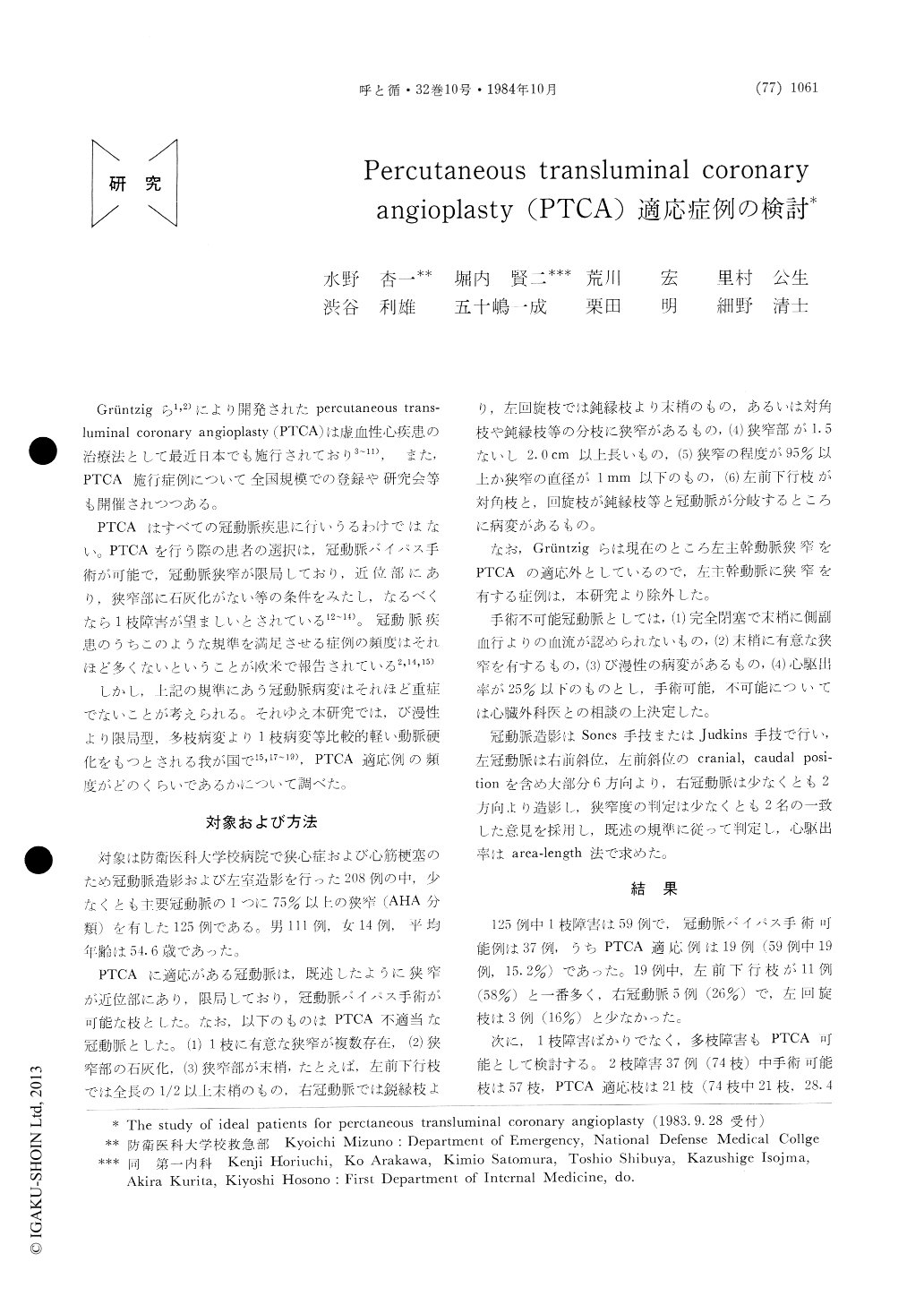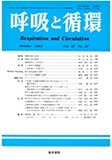Japanese
English
- 有料閲覧
- Abstract 文献概要
- 1ページ目 Look Inside
Grüntzigら1,2)により開発されたpercutaneous trans—luminal coronary angioplasty (PTCA)は虚血性心疾患の治療法として最近日本でも施行されており3〜11),また,PTCA施行症例について全国規模での登録や研究会等も開催されつつある。
PTCAはすべての冠動脈疾患に行いうるわけではない。PTCAを行う際の患者の選択は,冠動脈バイパス手術が可能で,冠動脈狭窄が限局しており,近位部にあり,狭窄部に石灰化がない等の条件をみたし,なるべくなら1枝障害が望ましいとされている12〜14)。冠動脈疾患のうちこのような規準を満足させる症例の頻度はそれほど多くないということが欧米で報告されている2,14,15)
One hundred twenty five patients who had a significant coronary artery disease were investigated whether they were ideal ones for percutaneous transluminal coronary angioplasty. A positive lesion, that is one appropriate for percutaneous trans-luminal coronary angioplasty, was defined as proximal, discrete, segmental, subtotal, non calcific lesion. A lesion was considered to be inappropriate for percutaneous transluminal coronary angioplasty when the diseased coronary artery had the fol-lowing feature: complete obstruction, multiple lesions in the same artery, distal or branch disease, a long stenotic segment, a markedly stenotic segment, or a lesion including or immediately adjacent to a coronary arterial bifurcation.
The 30 patients, consisted of 19 with single, 9 with double and 2 with triple vessel disease, were considered ideal patients. The patients with single vessel disease tended to be ideal patients when compaired with who had multivessel disease. The frequency of ideal patient for percutaneous trans-luminal coronary angioplasty among the patients of coronary artery disease in our study was a little higher than that of U.S.A. This difference may be due to the difference of severity of coronary artery disease between ,Japanese and American.
The ideal patients had the shorter duration of symptoms, and the frequency of ideal patient was inversely related to age.

Copyright © 1984, Igaku-Shoin Ltd. All rights reserved.


